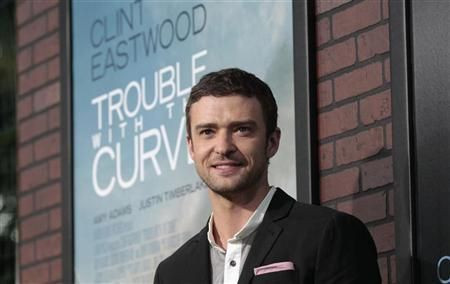Facebook Social Graph Hype Overshadows Myspace Relaunch

Like a phoenix rising from the ashes, the long-suffering social network Myspace relaunched with a whole new look and modified mission. But rather than being the reboot heard around the world, the event was more akin to a tree falling in the woods. If it made a sound, few people noticed.
After months of beta testing, the once-dominant “place for friends” officially opened to the public on Tuesday. The opening was timed to coincide with the release of a new album by Justin Timberlake, an investor in Myspace who seems determined to live out a real-life version of the Sean Parker role he played so adeptly in “The Social Network.” It’s that much more ironic, consequently, that Myspace’s virtual ribbon-cutting ceremony was overshadowed -- yet again -- by all the chatter surrounding its indomitable rival, Facebook Inc. (Nasdaq:FB).
Throughout the morning on Tuesday, media and tech geeks everywhere were waiting with bated breath as Mark Zuckerberg and company planned a “mysterious event” at Facebook’s headquarters in Menlo Park, Calif. That event, of course, turned out to be the announcement of Facebook’s new internal search engine, Social Graph, which will purportedly make it easier for users to find friends, photos, places and interests within their personal social networks.
It was the first major product announcement since Facebook’s IPO in May, and the big reveal became the talk of the tech world late Tuesday as analysts postulated Social Graph’s implications for Facebook’s real competition, Google (Nasdaq:GOOG). And in the end, all the noise left little spotlight to spare for the new Myspace, which has already been out of the spotlight for so long that its core target audience may be too young to remember its heyday.
Last year, News Corp. (Nasdaq:NWSA) sold Myspace to the California-based company Specific Media for $35 million in cash and stock. At the time, Timberlake took on an ownership role, and his celebrity status is bringing a desperately needed sense of glamor to the site. Rupert Murdoch’s conglomerate had bought Myspace for $580 million in 2005, when the social network was at its peak. Facebook at that time was still just a small niche network for college students. But, of course, fortunes changed quickly for the two sites, with the latter now boasting a billion members while Myspace plummeted out of the mainstream eye.
This is not to say that Myspace has no chance of reclaiming some of its former glory. By any definition, its new look is cleaner and classier than the old Myspace -- a grotesque amalgam of customized page layouts and animated GIFs. Borrowing from the less-is-more ethos of the modern Internet, the new Myspace abounds in muted greys and blues. It is decidedly easy on the eyes, even if the navigational interface is disjointed and confusing. Perhaps even more confusing is its stated mission as a place where users can find new music and share it with their friends. By allowing users to sign in via their Facebook or Twitter accounts, the site is making it clear that it has no intention of unseating the current rulers of the social Web, but that only raises more questions about what users are supposed to do on the site.
This is Myspace’s third attempt to reinvent itself since it fell from grace in the mid ‘00s. Fate may be kinder to the website this time around, but then again, maybe there’s a reason Tom got out while he did.
© Copyright IBTimes 2024. All rights reserved.






















